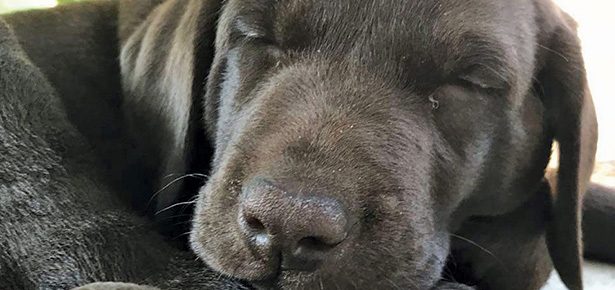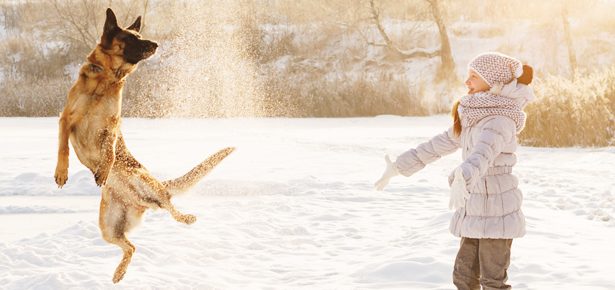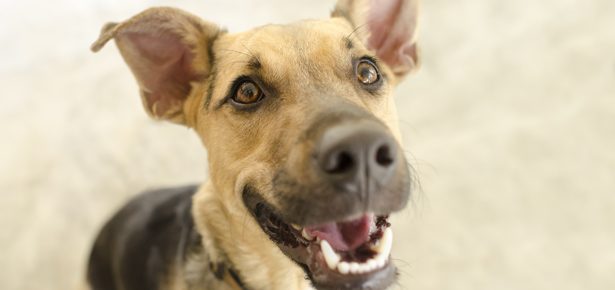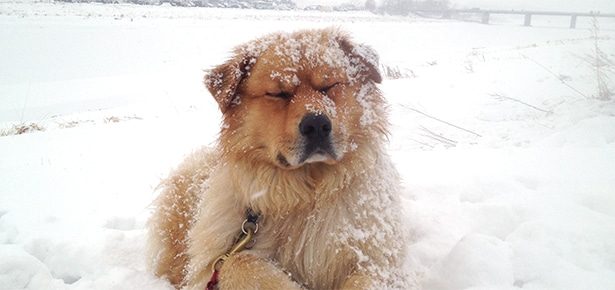
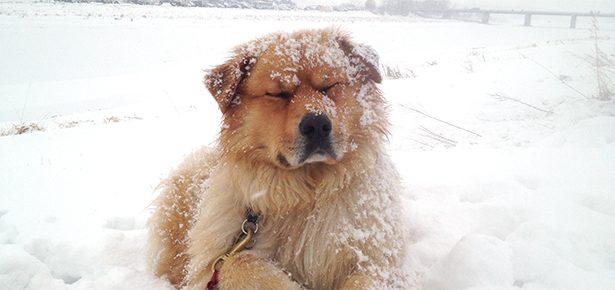
Preparing your Pet for Cold Weather
As the temperature outside drops, pets rely on their owners to provide shelter, food, water, and warm blankets
As the temperature outside drops, people begin wearing heavier coats. But how do pets prepare for cold weather? Animals rely on their owners to provide shelter, food, water, and warm blankets during the winter months. Dr. Sarah Griffin, lecturer at the Texas A&M College of Veterinary Medicine & Biomedical Sciences, explained how pet owners can keep both inside and outside pets warm this winter.
“Some pets handle the cold weather better than others,” Griffin said. “Dog breeds such as Siberian Huskies or Saint Bernard’s are bred to handle cold weather, while others like Chihuahuas or Greyhounds are not. Pet owners should watch for shivering, because it is a mechanism used to compensate for being cold. However, constant shivering may mean that the pet is uncomfortably cold.”
Griffin said if a pet is sheltered out of the wind or cold, and still shivering, this may mean it is too cold for the pet to be outside. In this case, prepare a warm bed for the animal to stay inside until the temperature rises high enough for the animal to be comfortable outside again. If the pet cannot stay inside, Griffin recommended tips for creating a warm shelter outside.
“Shelters can be purchased from pet supply stores, online, or can even be homemade to protect outdoor pets from the weather,” Griffin said. “A dog house should be big enough for the dog to stand up and turn around in, but not excessively big. The dog’s own body heat is enough to heat a dog house to a comfortable temperature on a cold day. Cat houses can be made with the same concept of making it large enough for the cat to move around but small enough for the cat’s body heat to keep the temperature comfortable.” Additionally, Griffin said she does not recommend heat lamps or heaters in pet shelters because they can be fire hazards. However, blankets can help your pet stay warm.
When preparing pets for cold weather, owners should also consider any health conditions their pet might have. Griffin said pets with underlying health conditions may be less adapted to changes in weather. As a result, pet owners should make changes in their pet’s environment accordingly.
“In general, pets with health conditions are better as indoor pets so their health can be monitored closely,” Griffin said. “Of course, pets with health conditions can go outside for short periods of supervised time during cold weather months. However, these pets may need sweaters or boots to keep them comfortable.”
Additionally, pet owners should consider their pet’s food and water intake during the winter months. Although Griffin said pets’ basic calorie needs don’t change when the weather changes, the animal may require more calories if they are more active in cooler weather. Remember that fresh water should be available at all times, Griffin said.
Because animals rely on their owners to keep them warm during the winter, it is important for pet owners to provide warm shelters for both inside and outside pets. If you have any concerns about how cooler weather could impact your pet’s health, consult your veterinarian.
Join the newsletter and never miss out on dog content again!
"*" indicates required fields
By clicking the arrow, you agree to our web Terms of Use and Privacy & Cookie Policy. Easy unsubscribe links are provided in every email.


